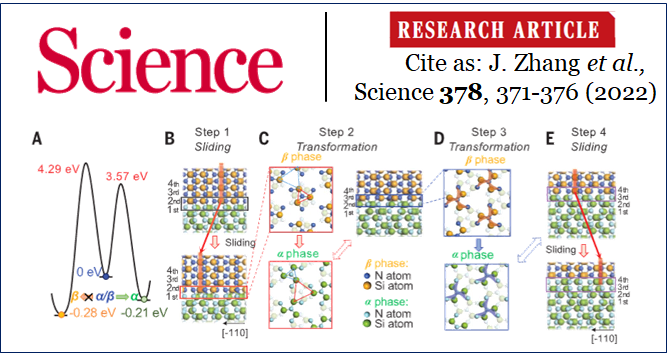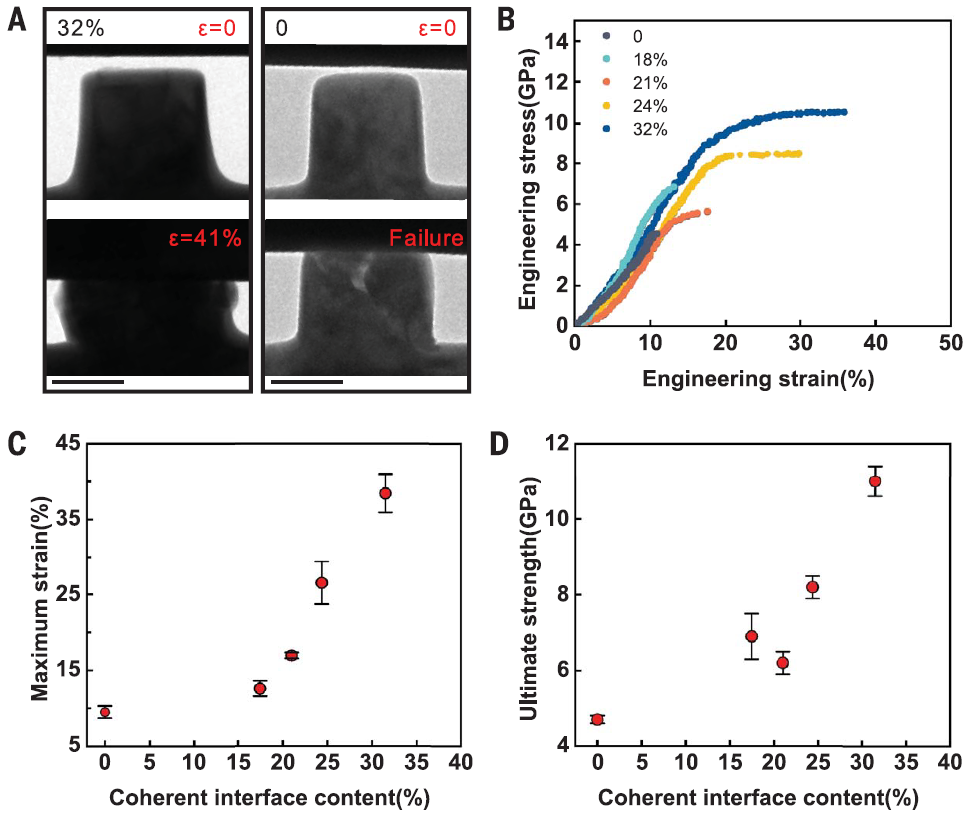
Covalently bonded ceramics exhibit preeminent properties-including hardness, strength, chemical inertness, and resistance against heat and corrosion-yet their wider application is challenging because of their room-temperature brittleness. In contrast to the atoms in metals that can slide along slip planes to accommodate strains, the atoms in covalently bonded ceramics require bond breaking because of the strong and directional characteristics of covalent bonds. This eventually leads to catastrophic failure on loading. We present an approach for designing deformable covalently bonded silicon nitride (Si3N4) ceramics that feature a dual-phase structure with coherent interfaces. Successive bond switching is realized at the coherent interfaces, which facilitates a stress-induced phase transformation and, eventually, generates plastic deformability. This work is published in Science 378, 371–376 (2022),titled “Plastic deformation in silicon nitride ceramics via bond switching at coherent interfaces,
DOI: 10.1126/science.abq7490.

Figure 1. Microstructure of dual-phase α/β-Si3N4 ceramics with coherent interfaces.


Figure 2. Mechanical behaviors of polycrystalline Si3N4 nanopillars with different proportions of coherent interfaces (proportion of the total length of the interfaces).

Figure 3. Phase-content change of Si3N4 samples during compression under high pressure.

Figure 4. A representative β→α phase transformation event revealed by in
situ TEM.

Figure 5. Density functional theory calculations showing the pathway of the β→α phase transformation.